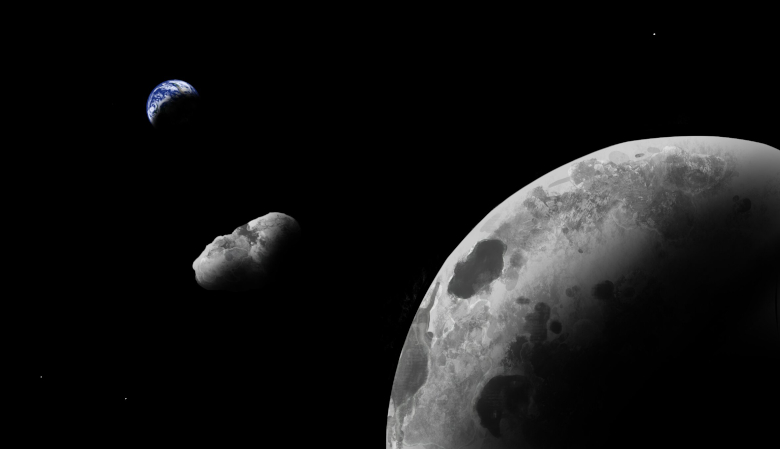A near-Earth asteroid roughly the size of a Ferris wheel, could be a fragment of our moon, say a team of astronomers led by the University of Arizona.
Known as Kamo`oalewa, this sizeable space-rock was discovered by the PanSTARRS telescope in Hawaii in 2016 and was aptly named from a word found in a Hawaiian creation chant that alludes to an offspring that travels on its own.
This wandering offspring however, does not stray too far from home. Kamo`oalewa is officially classed as a quasi-satellite—a subcategory of near-Earth asteroids that orbit the sun but remain relatively close to Earth. In Kamo`oalewa’s case, it gets as close as about 15 million kilometres (9 million miles) from our planet.
Little is known about these objects because they are faint and difficult to observe. Kamo`oalewa for example is about 4 million times fainter than the faintest star the human eye can see in a dark sky and coupled with its relatively small size – the asteroid is thought to be between 46 and 57 metres (150 and 190 feet) in diameter – it means only the largest telescopes on Earth have been able to observe it.
That telescope is the Large Binocular Telescope (LBT); a pair of huge identical 8.4-metre mirrors, side by side and operating on a common, steerable mount.
Located in southeastern Arizona’s Pinaleño Mountains, the LBT was built from 600 tons of steel and glass and stands at just under 3353 metres (11,000-foot) tall.
Due to its orbit, Kamo`oalewa can only be observed from Earth for a few weeks every April, and since 2016, that is what a team of astronomers led by planetary sciences graduate student Ben Sharkey have been doing.
Despite the closure of the LBT during April 2020 because of Covid, the team have built up a picture of what Kamo`oalewa is made up of by studying its pattern of reflected light, called a spectrum.
Their results indicate that the asteroid’s spectra matches those from lunar rocks collected during NASA's Apollo missions, a finding which could only suggest one thing – it came from the moon.
"I looked through every near-Earth asteroid spectrum we had access to, and nothing matched," said Sharkey, the paper's lead author. But this spring, we got much needed follow-up observations and went, 'Wow it is real,'" Sharkey said. "It's easier to explain with the moon than other ideas."
The team can't yet be sure how Kamo`oalewa may have broken loose from its parent rock, the Moon and with no other known asteroids with lunar origins known to exist, there is nothing similar to compare it with.
But it’s orbit could be another clue to its origins. Kamo`oalewa’s orbit is similar to the Earth's, but with the slightest tilt. Its orbit is also not typical of near-Earth asteroids, according to study co-author Renu Malhotra, a Univerity of Arizona planetary sciences professor who led the orbit analysis portion of the study.
"It is very unlikely that a garden-variety near-Earth asteroid would spontaneously move into a quasi-satellite orbit like Kamo`oalewa's," Malhotra said. "It will not remain in this particular orbit for very long, only about 300 years in the future, and we estimate that it arrived in this orbit about 500 years ago," Malhotra said. Her lab is working on a paper to further investigate the asteroid's origins.
Details of this study can be found in a new paper published this week in Nature Communications Earth and Environment.











